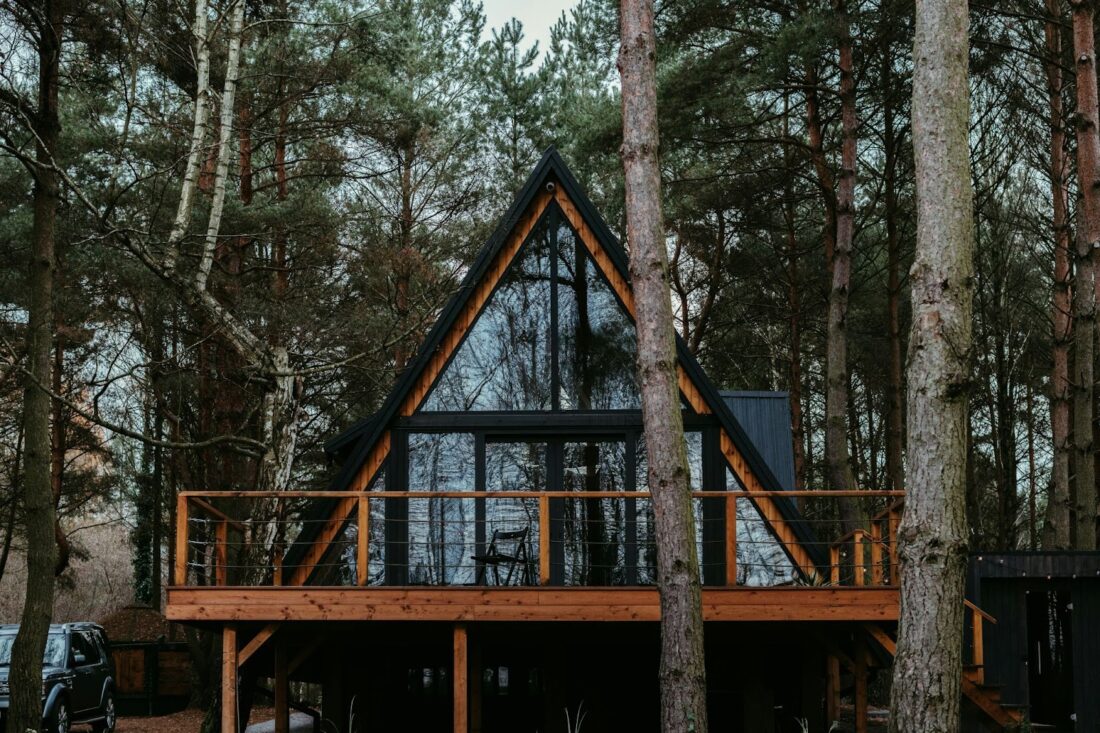Timber houses exude timeless charm and warmth that concrete and steel simply can’t match. From cozy log cabins nestled away in dense forests to sleek modern constructions designed with sustainability in mind, wooden houses bring their own special beauty. But as with anything, wooden homes come with their own set of advantages and disadvantages. Whether you dream of building your very own rustic retreat or are considering housing options this blog will take you through all aspects of living in one.

Photo by Polina Kuzovkova on Unsplash
The Good: Why Wooden Houses Are Worth Loving
Unrivalled Aesthetic Appeal
Wood houses boast character, warmth and natural beauty few other building materials can match. Thanks to an endless variety of wood types, textures, grains and styles available, each home can have its own distinct aesthetic appeal and unique style. Be it rustic charm from hand-hewn logs or polished timber for modern appeal, wood never disappoints in providing aesthetic satisfaction.
Eco-Friendly and Sustainable
Wood houses offer several environmental advantages over concrete buildings. Wood is a renewable resource with lower environmental impacts when harvested responsibly. Construction carbon footprint is usually smaller as well. Many people opt for wooden homes as a means of mitigating climate change while living more harmoniously with nature.
Great Natural Insulation
Wood makes for excellent natural insulation. In wintertime, its natural insulating properties help retain heat within your house for warmth and coziness. And during hotter summer days it works just as effectively to keep things cool. All year-round thanks to wood’s insulating properties. As an added benefit, its energy costs may even decrease.
The Bad: The Challenges of Wooden Houses
Vulnerability to the Elements
While wood houses may appear more appealing, their susceptibility to environmental conditions such as moisture is much lower compared to artificial materials like concrete. Over time, moisture damage causes serious issues including warping, cracking and even rotting in wood buildings. Without appropriate treatment and regular maintenance they could deteriorate much faster than their concrete counterparts.
Termites and Other Pests
One drawback of wood construction is its susceptibility to pests like termites, carpenter ants, and wood-boring beetles, insects which can wreak havoc upon wooden structures left unchecked. Preventative measures should be taken during construction to ward off these infestations while regular inspections will help identify infestations early and termite exterminators should also be hired as protection from such attacks.
Fire Hazard
Wood burns easily, which poses a considerable hazard in areas susceptible to wildfires. While modern construction techniques and flameproof treatments can reduce risk, wooden homes remain more vulnerable than their concrete or steel counterparts in terms of fire damage risk.
Balance the Scales
Wooden homes represent an eco-conscious lifestyle that appeals to many. But before buying one, it is important that all aspects are thoroughly examined. Understanding both their benefits and challenges. Modern technologies and treatments have greatly reduced many of the traditional disadvantages associated with wood housing such as protective coatings or fire-proof building methods. Nonetheless it requires a committed homeowner in order to keep a wooden house in top condition.
Conclusion
Wooden houses are like life itself, full of beauty, joy and challenges to face head on. If you appreciate natural aesthetics and value sustainability without minding a bit of maintenance yourself, a wooden home might just be your dream come true. Otherwise you should carefully consider other options. Ultimately there’s no absolute right or wrong answer when it comes to wooden houses. It depends on your lifestyle, priorities and your ability or enthusiasm to meet challenges head-on. One thing’s certain though, no other material comes close to nature’s finest.




